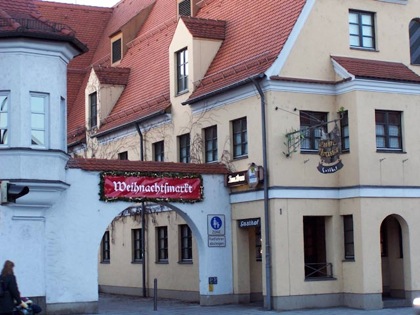
While Christmas is joyfully celebrated by Christians of all varieties, the option of celebrating the weeks before the big holiday have only caught on with Protestants in the last few decades. I didn’t discover Advent until I was in college, and figured any religion that could make Christmas into a four week holiday (longer, if you count Epiphany!) was worth serious consideration.
Leave it to the Catholics to know how to plan a party. First, the colors change. The banners, altar cloths, and priests’ garb changes to violet, white, then gold. In fact, the Church declares that Advent, the season of anticipation, is the beginning of the Church year. Mass begins with the lighting of the Advent candle as a reminder of the new liturgical season, sort of like Black Friday kicking off the holiday shopping season.
When my sons were young we set up a small Advent wreath to light at home and a German Advent Calendar with little paper doors to open each day until December 25th. You never know what little things will lead to. . .
Twenty years later the four of us were in Germany for Christmas discovering yet another Advent tradition at the Weinachtsmarkt or Christkindlmarkt, a holiday street market with roots in the Middle Ages usually held in the marketplace or on the steps of the local church. The Dresden Weinachtsmarkt is credited as being the oldest market (from 1434), but Vienna claims its Bautzen market of 1294 was the forerunner.
At churches throughout Germany. Austria, and Alsace, the First Sunday Of Advent marks the opening of the Weinachtsmarkt, The Christmas version of our Southern California church fiesta.
We stumbled on our first Weinachtsmarkt somewhere off the autobahn from Munich to Freiberg after a mind-and -body- numbing nonstop flight from Los Angeles. We pulled off the highway in desperate search for a reststop and refreshment, and suddenly found ourselves in front of a Catholic church where the universal sounds of of hammers and electric drills filled the air. A closer look showed that wooden stalls were being assembled, grills heated, and gluwein set to simmer.
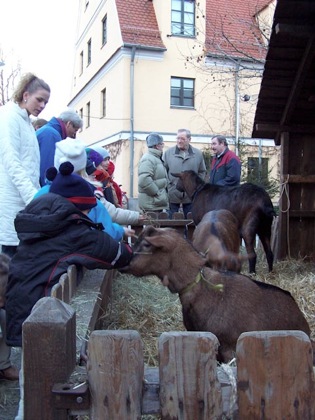
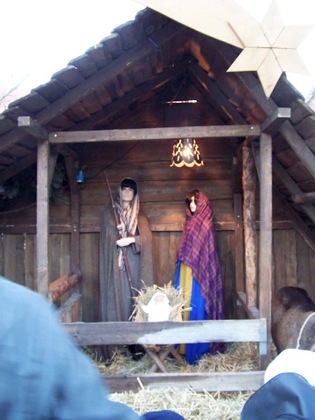
We were first to sample the hot mulled drink and sausages, warming our hands around the cups as we watched assorted animals being led into the square for the Nativity stall. Children helped throw the hay for bedding, and stroked the animals. In the short time we were there, stringed lights came to life, the sound of hammers gave way to singing, and more people filled the market.
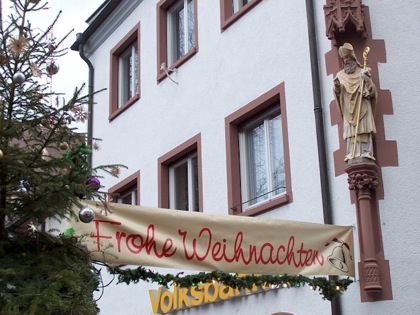

In Freiburg im Breisgau where our son lived we discovered double Weinachtsmarkts. The large central fair on the Rathausplatz (town square), and a smaller one set up in front of a smaller church.

Of course, the main attraction at these events is the food — sizzling wursts in all varieties, steaming mugs of hot spiced Glüwein, stollen, candies, lebkuchen. Stalls offered assorted Bavarian Christmas wares for sale, from handmade wooden cheese boards to knit scarves, to carved wooden ornaments.

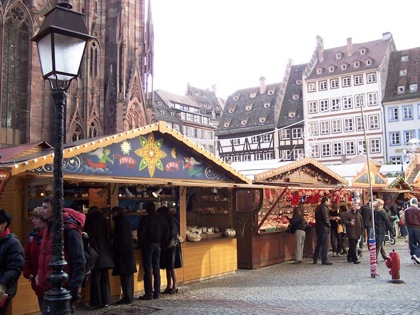
In Strasbourg, we found the Alsatian version held in the square outside the Cathedral of Our Lady of Strasbourg where Croque Monsier and soft macaroons were the snacks of choice instead of the traditional Bavarian wurst und .
In anticipation of Advent, I am dusting off our home Advent wreath and setting up the little German calendar. The Glühwein is already steaming.
Traditional Glühwein (Glow Wine)1 bottle nice full red wine1 lemon12 cloves1 cinnamon stick1/4 – 1/3 cup sugarPour the wine and sugar into a large saucepan and heat gently; do not boil. Cut the lemon in half and stick the cloves into one half. Thinly slice the other half. Add the lemon with cloves, and lemon slices, and cinnamon stick. Heat slowly until steaming hot. Traditionally served in glass mugs.

Lovely post! You’ve reminded me to dig out our Hamburg Christmas Market mugs to use this Advent.
I enjoyed reading about your experiences. Thanks for sharing!
Oh wow… these pics remind me of my visit to Germany in ’98… iand especially the Kathe Wohlfarht Christmas market in Rothenburg ob der Tauber. It was late September, so I can imagine how lovely it must be in December. Germans really know how to do Christmas!
I’m so trying that mulled wine recipe.
Frohe Weinachten! I will raise a steaming cup of glühwein to you!